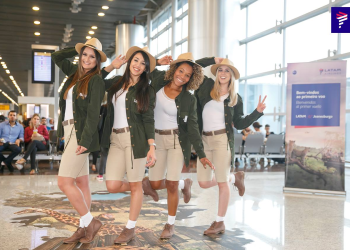Introduction
Art and architecture stand as enduring testaments to human creativity and ingenuity, shaping the cultural landscape of civilizations throughout history. In this article, we embark on a journey to explore the world of art and architecture, from ancient masterpieces to contemporary innovations, found in museums and galleries worldwide.
1. Role of Museums and Galleries
Museums and galleries play a pivotal role in preserving, interpreting, and showcasing art and architecture to the public. Serving as custodians of cultural heritage, these institutions provide invaluable opportunities for visitors to engage with artistic masterpieces and architectural wonders.
2. Artistic Movements and Styles
Art history is replete with diverse artistic movements and styles, each reflecting the socio-cultural contexts of its time. From the Renaissance’s celebration of humanism to the avant-garde experimentation of the modern era, we delve into the rich tapestry of artistic expression spanning centuries.
3. Architectural Marvels
Architecture stands as the tangible embodiment of human aspirations and achievements, with iconic landmarks serving as enduring symbols of cultural identity and innovation. From the majestic pyramids of Egypt to the soaring skyscrapers of the modern age, we marvel at the architectural wonders that have shaped our world.
4. Famous Museums Around the World
Across the globe, museums house unparalleled collections of art and artifacts, offering visitors glimpses into the past, present, and future of human creativity. From the Louvre in Paris to the Metropolitan Museum of Art in New York, we explore the world’s most renowned museums and the treasures they hold.
5. Galleries and Art Exhibitions
In addition to museums, galleries and art exhibitions provide platforms for contemporary artists to showcase their work and engage with audiences. From intimate galleries showcasing emerging talent to blockbuster exhibitions featuring groundbreaking installations, we uncover the vibrant world of contemporary art.
6. Art Appreciation and Interpretation
Appreciating art and architecture goes beyond mere observation – it requires understanding the cultural, historical, and artistic contexts that shape each masterpiece. Through informed interpretation, viewers can unlock the deeper meanings and symbolism embedded within artworks and architectural structures.
7. Cultural Significance of Art and Architecture
Art and architecture serve as mirrors reflecting the values, beliefs, and aspirations of society, offering insights into the human experience across time and space. By studying artistic expressions, we gain a deeper understanding of cultural identity, heritage, and collective memory.
8. Impact of Technology on Art and Architecture
Technological advancements have revolutionized the creation, preservation, and dissemination of art and architecture, opening new avenues for creative expression and engagement. From digital art installations to virtual museum tours, technology has transformed the way we interact with artistic content.
9. Art Conservation and Preservation
Preserving art and architectural heritage is paramount to safeguarding cultural legacy for future generations. Through meticulous conservation efforts, experts work to protect artworks and architectural landmarks from deterioration, ensuring their longevity and continued enjoyment by audiences worldwide.
10. Accessibility and Inclusivity in Art Institutions
Despite their cultural significance, museums and galleries have historically been perceived as exclusive spaces, inaccessible to certain communities. Efforts to promote accessibility and inclusivity aim to break down barriers and make art and architecture more accessible to diverse audiences, regardless of background or ability.
11. Educational Programs and Outreach
Educational programs and outreach initiatives play a crucial role in fostering art appreciation and cultural literacy among audiences of all ages. Through guided tours, workshops, and community outreach, museums and galleries strive to engage with the public and inspire a lifelong love of art and architecture.
12. Art and Architecture Tourism
The rise of art and architecture tourism has transformed cities and regions into cultural destinations, attracting visitors from around the world eager to explore artistic treasures firsthand. Beyond economic benefits, art tourism fosters cultural exchange and dialogue, enriching the cultural fabric of communities worldwide.
13. Contemporary Trends in Art and Architecture
In the digital age, art and architecture continue to evolve, responding to global trends and societal challenges. From sustainable design practices to art activism addressing social issues, contemporary artists and architects push boundaries, shaping the future of creative expression and cultural discourse.
Conclusion
In conclusion, the world of art and architecture offers a boundless realm of discovery and inspiration, inviting audiences to explore the beauty, complexity, and diversity of human creativity. Whether wandering through the halls of a museum or marveling at architectural wonders, the journey of discovery never ceases to amaze.

FAQs After The Conclusion
1. How can I appreciate art and architecture more deeply?
- Take your time to observe and reflect on artworks and architectural details, engage in research to understand their historical and cultural contexts, and seek out guided tours or educational resources for deeper insights.
2. Are there any online resources for exploring art and architecture from home?
- Yes, many museums and galleries offer virtual tours and online collections, allowing you to explore artworks and architectural landmarks from the comfort of your own home.
3. What are some common misconceptions about art and architecture?
- One common misconception is that art and architecture are only for the elite or highly educated. In reality, anyone can appreciate and enjoy art and architecture regardless of background or expertise.
4. How can I support local artists and architects?
- Support local artists by attending exhibitions, purchasing their artwork, and sharing their work with others. Likewise, support local architects by hiring them for projects and advocating for thoughtful urban planning and design.
5. Are there any upcoming trends or movements in the art and architecture world?
- Trends such as sustainable architecture, digital art, and community-driven projects are gaining momentum in the art and architecture world, reflecting a growing emphasis on environmental stewardship and social responsibility.
6. What are some famous examples of architectural innovation and design?
- Examples include the Sydney Opera House, Guggenheim Museum Bilbao, and Burj Khalifa, each renowned for its groundbreaking design and architectural innovation.
7. How can I get involved in art conservation and preservation efforts?
- Consider volunteering or donating to organizations dedicated to art conservation and preservation, participating in community clean-up efforts, or advocating for policies that protect cultural heritage.
8. What are some ways to incorporate art and architecture into everyday life?
- Visit local galleries and museums, attend cultural events and exhibitions, incorporate art into your home decor, and explore architectural landmarks in your city or neighborhood.









